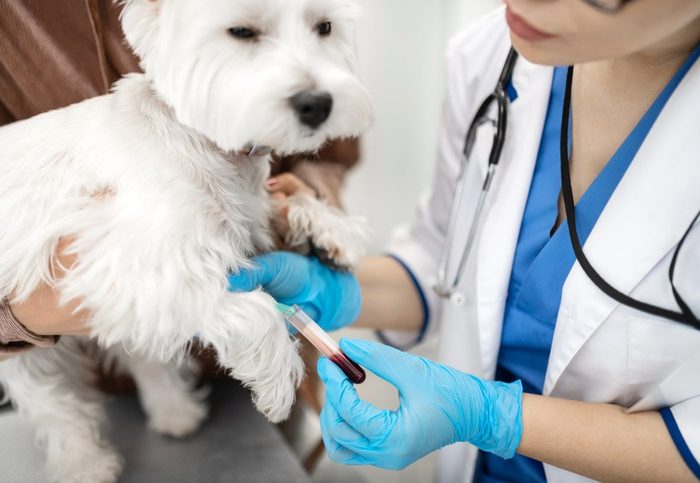Preparing for your beloved pet’s surgery can be as nerve-wracking as gearing up for your own. However, with the right knowledge and preparation, you can ease into the process, ensuring you and your fluffy companion are as ready as can be for the day of the operation. Let’s talk about the essential steps you should take to get your pet ready for surgery.
1. Get to Know the Procedure
First things first, you need to have a clear grasp of what the surgery entails. What condition is the surgery treating? Is it elective or emergency surgery? What are the expected outcomes? How long is the recovery process? These are questions you should have answers to before the big day. And it’s not just about scouring the internet; your vet is the best source of accurate and relevant information. So, don’t hesitate to ask questions and note down the details.
Getting acquainted with the expertise of your veterinary surgical specialists is key. Trusting the skills and knowledge of these professionals can put your mind at ease. They’ll be the ones carefully monitoring your pet and ensuring the surgery goes smoothly.
2. Follow Pre-Surgical Instructions
-
Fasting Guidelines
-
Adjust Medications if Necessary
-
Prepare a Comfortable Recovery Space
Adhering to pre-surgical instructions is vital for your pet’s safety, and fasting is usually required to prevent complications during anesthesia. Your vet will specify how long before the surgery your pet should stop eating and drinking. If your pet is on any medications, your vet might adjust the dosages or schedule. Also, set up a cozy recovery area in a quiet room at home where your pet can rest peacefully after surgery, away from any chaos.
3. Communicate With Your Vet Team
Communication with the veterinary team is crucial. You want to be on the same page regarding every aspect of the surgery. Clear up any concerns about the procedure, anesthesia, and post-op care. A good understanding helps you feel more at ease with the process.
Now, while we hope it’s never needed, having a plan for engaging with an emergency animal hospital in Argyle, TX, should the unexpected happen, is necessary. Make sure you know the location and how to reach the facility quickly should post-op complications arise.
4. Get Informed About Anesthesia
Anesthesia is a common component of veterinary surgery, but it can cause worry for many pet owners. Please talk to your vet about the type of anesthesia used, how it’s monitored, and their emergency protocols. It’s also the perfect moment to discuss any previous reactions your pet may have had to sedation or anesthesia.
5. Prepare Your Home
-
Remove Hazards: Before bringing your pet home, carefully inspect your living space and remove any potential hazards that could pose a danger to your pet. This includes securing loose electrical cords, covering or removing toxic plants, storing household chemicals and medications out of reach, and blocking off access to small spaces where your pet could become trapped. By eliminating potential hazards, you create a safer environment for your pet to explore and enjoy.
-
Set Aside Special Care Items: Gather essential items your pet will need, such as food and water bowls, a comfortable bed or crate, toys for mental stimulation, and grooming supplies. Designate a specific area in your home to store these items, making them easily accessible for both you and your pet. Having everything prepared in advance helps your pet settle into their new environment more smoothly and reduces stress for both of you.
-
Know the Layout of Your Pet’s Living Area: Familiarize yourself with the layout of your pet’s living area, including designated feeding and sleeping areas, as well as any boundaries or restrictions you’ve established. If you’re bringing home a puppy or kitten, consider setting up a designated potty area and using baby gates to block off areas of your home that are off-limits. Understanding the layout of your pet’s living space helps prevent accidents and promotes a sense of security and routine for your pet.
6. Update Pet Vaccinations
Understanding the role of dog vaccinations in the surgical process is also important. Ensure your pet is up-to-date with all vaccines well ahead of their operation. This safeguards against preventable diseases when their immunity might be compromised post-surgery.
7. Prepare Documentation and Records
Make sure all of your pet’s documentation and medical records are organized. This includes their medical history, any previous procedures, vaccination records, and insurance information, if applicable. Having everything in one place makes it easier for the vet and the surgical team to provide the best care possible.
The Morning of the Surgery
On the day of the surgery, stay composed. Your little buddy will need you to be their rock. Follow the vet’s instructions carefully regarding any morning medications and arrive at the appointment on time. Take your pet’s favorite blanket along for added comfort.
Post-Operative Care Expectations
Understanding what to expect after the surgery is just as important as the preparation. Your vet should provide detailed instructions for post-operative care. This might include how to administer medications, wound care, feeding guidelines, and recognizing signs of possible complications.
Final Thought
These steps are meant to prepare both you and your pet for the surgery and ensure that you handle the recovery process with ease and confidence. Remember, preparation can significantly affect the outcome, so take the time to review these steps as many times as necessary. Here’s to a successful surgery and a speedy recovery for your furry friend.





